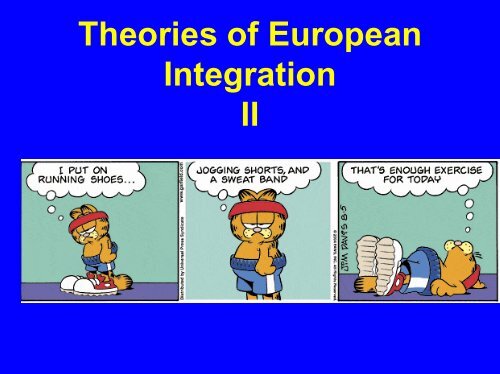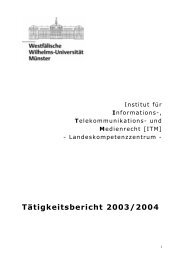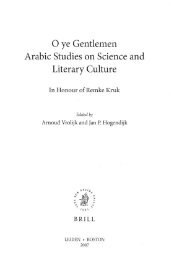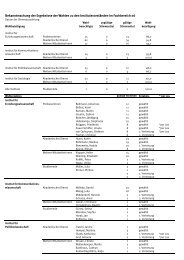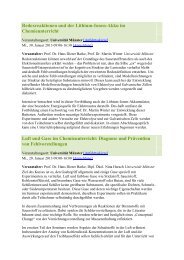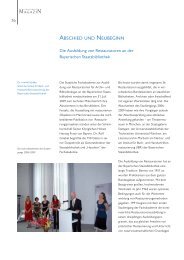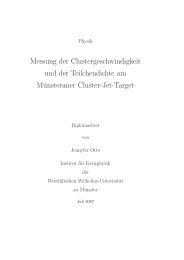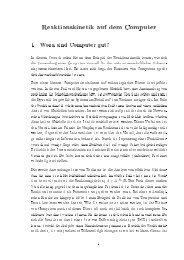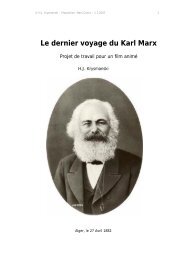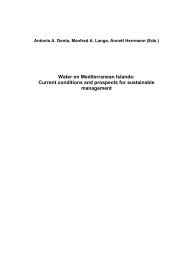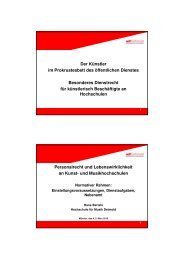Comparative Politics 1 POL1010 - CAESAR
Comparative Politics 1 POL1010 - CAESAR
Comparative Politics 1 POL1010 - CAESAR
Create successful ePaper yourself
Turn your PDF publications into a flip-book with our unique Google optimized e-Paper software.
Theories of European<br />
Integration<br />
II
Items to be covered<br />
• The Two Main Recent Theories of European<br />
Integration<br />
• Neo-Functionalism and Supranationalism<br />
• Neo-Functionalism’s Roots<br />
• Neo-Functionalism’s Four Main Features<br />
• Evaluation of Neo-Functionalism<br />
• Liberal Intergovernmentalism (LI) and the<br />
Member States<br />
• Liberal Intergovernmentalism and its Roots<br />
• Liberal Intergovernmentalism and Andrew<br />
Moravcsik<br />
• What Role for Supranational Institutions?
Theories of European Integration –<br />
more recent developments<br />
Today, there are two main theories of<br />
European integration - Neo-Functionalism<br />
and Liberal Intergovernmentalism.<br />
These provide us with two contrasting<br />
visions of what the EU system of government<br />
is actually supposed to look like.<br />
These alternate visions or world views are:<br />
a supranational system of governance<br />
versus an intergovernmental organisation
Theories of Integration: Neo-<br />
Functionalism<br />
• Neo-functionalism – the view that the EU is<br />
becoming a supranational state which is<br />
incrementally inheriting all the tasks traditionally<br />
carried out by member states.<br />
• In this view the nation state is transferring its<br />
powers and sovereignty upwards to the<br />
European level in political, sectoral and<br />
geographical terms. This transfer takes place<br />
from the nation state to a supranational set of<br />
authoritative institutions.<br />
Source: Schmitter, 1996: 2
Neo-Functionalism and a<br />
Supranational View of Integration I<br />
Neo-Functionalism: analytic focus concentrates on<br />
supranational institutions – EU Commission, ECJ,<br />
EP (and more recently also the ECB)<br />
Key author: Ernst B. Haas<br />
In his 1958 text The Uniting of Europe Haas argued that:<br />
economic integration, however defined, may<br />
be based on political motives and frequently<br />
begets political consequences<br />
(Haas 1958: 12).
Neo-Functionalism’s Roots: Critique<br />
of David Mitrany’s Functionalism I<br />
Neo/Functionalism is a reaction against<br />
Functionalism and the idea that economics<br />
and politics can be kept separate and that<br />
integration can be confined to areas of low<br />
politics<br />
Functionalist David Mitrany argued in 1930:<br />
‘peace will not be secured if we<br />
organise the world by what divides it’<br />
(Mitrany, 1943: 96).<br />
(…that statement obviously refers to the nation state<br />
system…)
Neo-Functionalism’s Roots: Critique<br />
of David Mitrany’s Functionalism II<br />
• Haas – lack of the political makes the<br />
functionalist account unrealistic<br />
• How is it possible for technical and economic<br />
integration to actually happen and for political<br />
cooperation to remain absent?<br />
• For Haas political motives stimulated<br />
cooperation in the first place; sometimes<br />
political cooperation is also an unintended<br />
consequence of technical cooperation
Neo-Functionalism’s Features I<br />
1. Neo-Functionalism focuses upon<br />
Process:<br />
‘… integration is the process whereby<br />
political actors in several distinct national<br />
settings are persuaded to shift their<br />
loyalties, expectations and political<br />
activities toward a new centre, whose<br />
institutions possess or demand jurisdiction<br />
over the pre-existing national states…’<br />
(Haas, 1958: 16)
Neo-Functionalism’s Features II<br />
2. The Centrality of Supranational Institutions:<br />
‘potential agents of integration’<br />
(Haas, 1958: 29)<br />
For Haas two things were required if European<br />
integration was to be successful:<br />
1. A central government which stood apart<br />
from those of the member states – i.e.<br />
supranational institutions<br />
2. The development of a European<br />
consciousness
Neo-Functionalism’s Features<br />
III<br />
3. Transfer Of Loyalties: The Role Of<br />
Political Elites<br />
‘As the process of integration proceeds, it<br />
is assumed that values will undergo<br />
change, that interests will be redefined in<br />
terms of regional rather than purely<br />
national orientation and that the erstwhile<br />
set of separate national group values will<br />
gradually be superseded by a new and<br />
geographically larger set of beliefs’ (Haas,<br />
1958: 13).
Neo-Functionalism’s Features<br />
IV<br />
4. Spillover – Political, Technical And<br />
Geographical<br />
• Political Spillover – the political activities at<br />
the supranational level ‘spill over’ to affect<br />
loyalties of key political actors at the member<br />
state level.<br />
• Problematic assumption > is spillover a<br />
quasi/automatic process or does it need a<br />
politically willed decision to start it …
Neo-Functionalism’s Features<br />
IV<br />
4. Spillover – Political, Technical And<br />
Geographical<br />
• Technical Spillover – the cooperation<br />
between countries in one policy area can<br />
trigger cooperation in other related areas –<br />
e.g. cooperation on coal and steel policy<br />
(ECSC) triggered the formation of EEC.<br />
Problem > how technical is technical<br />
cooperation
Neo-Functionalism’s Features<br />
IV<br />
4. Spillover – Political, Technical And<br />
Geographical<br />
• Geographical Spillover: the benefits of being<br />
part of a European alliance - and the costs of<br />
being outside of it – lead countries to join<br />
EEC/EC/EU (e.g. UK in 1973), explanation of<br />
various rounds of enlargement from the<br />
1980s – to present
Lower<br />
barriers<br />
Ernst Haas<br />
Causes: Spillover<br />
Increase<br />
trade<br />
Mobilize<br />
new<br />
lobbies<br />
Create new<br />
firms
Evaluating Neo-Functionalism<br />
1950s and 1960s – neo-functionalism works:<br />
• POLITICAL – the ECJ and Commission adopting<br />
constitutional roles for themselves<br />
• ECONOMIC – ECSC had spillover in technical terms –<br />
EEC<br />
• GEOGRAPHICAL – In the 1960s various members of<br />
the European Free Trade Association made overtures<br />
to join the EEC<br />
But 1970s proved disappointing for the theorists –<br />
‘eurosclerosis’, oil crisis, member states inward<br />
looking – or was this rather a De Gaulle problem ??<br />
1980s – neo-functionalism revived with the Single<br />
European Act (1986)
Dream shopping
Liberal Intergovernmentalism<br />
and the Member States<br />
Liberal Intergovernmentalism –EU as an<br />
intergovernmental organisation limited to the<br />
collective pursuit of those tasks which protect<br />
and enhance the sovereign authority of its<br />
member states ( “Zweckverband” –<br />
administration union in German legal<br />
terminology)<br />
Focus is upon:<br />
• the member states and how they interact with<br />
one another in the Council of Ministers<br />
• the ‘grand bargains’ made in Treaty form<br />
Source: Schmitter, 1996: 2
LI and the EU as an<br />
Intergovernmental Organisation<br />
Liberal Intergovernmentalists view the EU as a:<br />
‘successful intergovernmental regime designed<br />
to manage economic interdependence<br />
through negotiated policy co-ordination’<br />
(Moravcsik, 1993: 474).<br />
Key foci of the LI approach:<br />
• The domestic interests of the EU member states<br />
• Intergovernmental bargains between these<br />
states
Liberal Intergovernmentalism<br />
Roots I<br />
LI can be seen as having two main sets<br />
of roots:<br />
1. Reaction against / critique of Haas’s<br />
Neo-Functionalism<br />
2. Product of the IR theory school of<br />
Realism
LI Criticisms of Neo-Functionalism<br />
2 Main Criticisms of Neo-Functionalism<br />
(Moravcsik, 1993)<br />
1.Neo-functionalism had failed to predict<br />
the trajectory of European integration<br />
(particularly from the 1970s)<br />
2.Neo-functionalism lacked a theoretical<br />
core and so failed to predict future<br />
developments and adapt its theoretical<br />
statements to the reality of integration
Liberal Intergovernmentalism: The Work<br />
of Andrew Moravcsik<br />
EC is best seen as an international regime<br />
of policy co-ordination<br />
‘the substantive and institutional<br />
development of which may be explained<br />
through the … analysis of national<br />
preference formation and<br />
intergovernmental strategic interaction’<br />
(Moravcsik, 1993: 481).
Three Main Features of Liberal<br />
Intergovernmentalism<br />
1. the assumption that state’s behave<br />
rationally<br />
2. a liberal theory of national preference<br />
formation<br />
3. an intergovernmentalist analysis of<br />
interstate negotiation<br />
Source: Moravcsik, 1993.
The Role of Supranational<br />
Institutions in the LI Account ?<br />
‘The decision to join all but the most minimalist<br />
of regimes involves some sacrifice of<br />
national autonomy, which increases the<br />
political risk to each Member State ….[I]n the<br />
intergovernmentalist view, the unique<br />
institutional structure of the EC is acceptable<br />
to national governments only insofar as it<br />
strengthens, rather than weakens, their<br />
control over domestic affairs, permitting<br />
them to attain goals otherwise unachievable’<br />
(Moravcsik, 1993: 507).
The Role of Supranational<br />
Institutions in the LI Account ?<br />
Moravcsik:<br />
• EC institutions were designed by the<br />
member states in such a way as to<br />
strengthen the member states own<br />
governments.<br />
• They aid policy coordination between<br />
states<br />
• They have exactly the amount of power<br />
which member states want them to have
Recommended Reading<br />
Cram, L. (1996) ‘Theories of European Integration’ in J.J. Richardson (ed)<br />
European Union: Power and Policymaking London: Routledge.<br />
Deutsch, K. (1966) Nationalism and Social Communication Cambridge, MA: MIT<br />
Press.<br />
Haas, E.B, (1958) The Uniting of Europe Stanford University Press.<br />
Haas, E.B. (1964) Beyond the Nation-State Stanford: Stanford University Press.<br />
Hoffmann, S. (1966) ‘Obstinate or Obsolete? The Fate of the Nation State and the<br />
Case of Western Europe’ in Daedalus 95, 892-908.<br />
Moravcsik, A. (1993) ‘Preferences and Power in the EC: A Liberal<br />
Intergovernmentalist Approach’ in Journal of Common Market Studies 31: 4,<br />
473-524.<br />
Moravcsik, A. (1995) ‘Liberal Intergovernmentalism and Integration: A Rejoinder’ in<br />
Journal of Common Market Studies 33: 4, 611-628.<br />
Mitrany, D. (1930) ‘Pan-Europa - A Hope or a Danger ?' in Political Quarterly 1, 4.<br />
Mitrany, D. (1943) A Working Peace System Chicago: Quadrangle.<br />
Puchala, D. (1970) ‘International Transactions and Regional Integration’ in<br />
International Organization 24, 732-763.<br />
Schmitter, P.C. (1996) ‘Examining the Present Euro-Polity with the Help of Past<br />
Theories’ in G. Marks et al (eds) Governance in the European Union London:<br />
Sage.<br />
Wincott, D. (1995) ‘Institutional Interaction and European Integration: Towards an<br />
‘Everyday’ Critique of Liberal Intergovernmentalism’ Journal of Common<br />
Market Studies 33: 4, 597-609.
Time to relax, folks…


